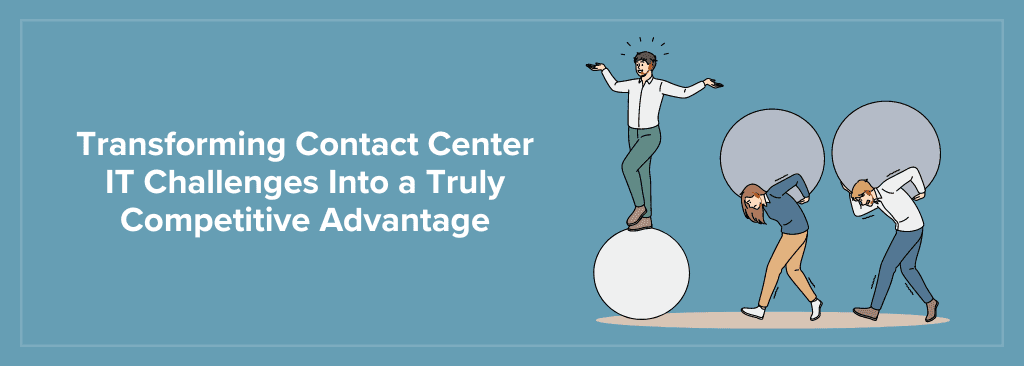Transforming Contact Center IT Challenges Into a Truly Competitive Advantage
I recently read the abstract of the guide titled “Transforming Contact Center IT Challenges into strategic advantages.”
This guide provides key strategies and advice for CIOs on:
- Assessing your contact center IT stack against modern best practices
- Identifying pain points and roadblocks introduced by legacy systems
- Building an IT roadmap focused on flexibility, scalability, and cost efficiency
- Leveraging cloud-based contact center solutions to improve operations
- Making the business case for contact center modernization initiatives
When I read this, I wondered if I should contextualize these strategies and advice, identify the objectives, and come up with some examples that might resonate with most contact centers.
Here it is.
Assessing Your Current Contact Center It Stack Against Modern Best Practices
Context: This involves evaluating the existing technology and systems (IT stacks) that form the backbone of the contact center.
Objective: The goal is to compare the current setup with industry practices, ensuring the technology aligns with current standards and capabilities.
For example, the contact center may rely on traditional on-premises CRM and Helpdesk platforms. The assessment may reveal that modern best practices include transitioning to a cloud-based CRM and Helpdesk solution for improved accessibility, real-time updates, and seamless integration with other communication channels.
Identifying Pain Points and Roadblocks Introduced by Legacy Systems
Context: Legacy systems, older technologies, or software may be causing challenges or hindering efficiency in the contact center.
Objective: The focus is identifying specific issues or customer pain points caused by outdated systems that may impact the contact center’s performance or customer service.
For instance, the contact center experiences delays and inefficiencies due to the limitations of an outdated Interactive Voice Response (IVR) system. Identifying this pain point highlights the need to replace or upgrade the IVR to enhance customer interactions and streamline call routing.
Building an It Roadmap Focused On Flexibility, Scalability, and Cost Efficiency
Context: Developing a strategic plan (roadmap) for the future IT architecture of the contact center.
Objective: Ensuring the IT infrastructure can adapt to changing needs and technological advancements. Designing systems that can easily grow or shrink to accommodate changes in business demand. Optimizing the IT strategy to balance performance and features with cost-effectiveness.
Here is an example. The IT roadmap may involve transitioning from a fixed-capacity, on-premises infrastructure to a scalable cloud-based contact center solution. This shift ensures the flexibility to handle fluctuations in call volumes, scalability to accommodate business growth, and cost efficiency by paying for resources as needed.
Leveraging Cloud-Based Contact Center Solutions to Improve Operations
Context: Exploring the adoption of cloud-based technologies specifically tailored for contact center operations.
Objective: The aim is to harness the benefits of cloud solutions, such as enhanced flexibility, scalability, and potentially lower infrastructure costs, to improve the overall efficiency of contact center operations.
Let us assume the contact center adopts a cloud-based Contact Center as a Service (CCaaS) solution. This enables agents to work from anywhere, facilitates easy integration with digital channels like chat and social media, and provides the scalability needed to handle peak call times without investing in additional on-premises hardware.
Making the Business Case for Contact Center Modernization Initiatives
Context: Presenting a compelling argument for investing in and implementing modernization initiatives.
Objective: This involves demonstrating the potential return on investment (ROI) and benefits of upgrading or modernizing the contact center’s IT infrastructure. It may include improved customer experience, operational efficiency, and long-term cost savings.
The business case could involve highlighting the potential benefits of modernization, such as improved customer satisfaction scores, reduced operational costs, and increased agent productivity. For instance, implementing a speech analytics tool in the modernization initiative could provide better insights into customer needs and preferences.
The ultimate goal of all these strategies and advice to CIOs is to enhance the contact center’s efficiency, adaptability, and overall performance. All these translate into tangible actions and decisions within a contact center.
The key is to tailor the modernization strategy to address specific challenges and opportunities in the contact center’s current IT landscape, aiming for a more customer-centric operation.
